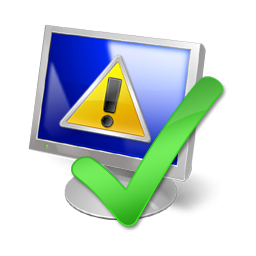Repair Vista Options - Preferred Sequence
When things start going wrong on your computer you need to find a way to get back on track. This tutorial shows you how to start repairing Vista, stepwise, from simple diagnosis and repair modules to a Clean Install with its more serious consequences.
If you have SP1 installed, then you will need a slipstream or normal Vista SP1 installation DVD to do any repairs calling for the use of the Vista installation DVD. If you have SP2 installed, you'll likewise need a Vista SP2 DVD.
It's a good idea to Backup Files & Folders before you do any repair work on Vista in case anything unexpected happens. Once your repair is completed, you can Restore Backup Files & Folders if needed.
How to Backup Files with Optional Automatic Backups in Vista
How to Restore Backup Files in Vista
How to Backup Files with Optional Automatic Backups in Vista
How to Restore Backup Files in Vista
1. Virus/Malware Scan. Viruses and malware (adware, spyware) can easily find their way onto your computer without you knowing it and degrade your OS. If your computer is slowing down or malfunctioning, it could be a result of these bad actors. Do a virus/malware scan to eliminate this as a possible cause of your problems. Links to free programs for this that work well with Vista are provided below.
Avast Antivirus/Antimalware Download
AVG Antivirus Download
AVG Antispyware Download
2. Disk Cleanup Scan. Every time you run your computer a number of files are left in Temporary Files and other locations. Over time this clutter builds up and can slow down your computer and prevent normal functioning of programs. Run a Disk Cleanup scan to remove unnecessary file clutter.
How to Run Disk Cleanup
3. Disk Defragmenter. Files are laid down on the hard disk in a sporadic pattern such that fragments of each file are scattered over the disk. Each time your computer reads a file, it must jump around the hard disk to read all the fragments. This exercise takes up time and slows file processing, degrading computer performance. Run Disk Defragmenter to put together file fragments and improve performance.
How to Run Disk Defragmenter
4. Specific Applications/Devices Not Working (Device Drivers). Try updating and/or reinstalling your drivers/applications for the application or device not working properly. Go to Control Panel, select Device Manager, then select the device, right-click and select Update Driver Software. You may need to go to the website where you bought your computer (i.e. Dell) or to the specific application vendor for an updated driver. If you end up doing a Vista Upgrade Repair Reinstall, you may have to reinstall some of your drivers as well. You can also use a device driver/application update service to help you do this.
Version Tracker Pro Download
5. Run CheckDisk Error Checking. This will fix many common errors on your system. If CheckDisk will not run you likely have a corrupt chkdsk.exe file (which runs Error Checking) or autochk.exe file (which calls on the chkdsk file to run). SFC (below) will identify corrupt system files, and if SFC is unable to repair them, proceed to Access System Files From Your Vista Install DVD (below) to copy good files from the DVD to your OS to replace the corrupt files.
How to Use Check Disk in Vista
6. Do A System Restore. Restore from a date before you started having problems.
How to Do a System Restore in Vista
[FONT=Arial,Arial]7. [/FONT]Do A Vista Complete PC Restore. [FONT=Arial,Arial]If you have made a Complete PC Backup on a date before you started having problems, do a Complete PC Restore. [/FONT]
How to Restore the Complete Computer from a Complete Backup and Restore Image in Vista
[FONT=Arial,Arial]8. [/FONT]Run Vista DVD Startup Repair. [FONT=Arial,Arial]Startup Repair can repair lots of things, not just startup. [/FONT]
How to Do a Startup Repair in Vista
[FONT=Arial,Arial]9. [/FONT]Run System File Check. This can repair many corrupted system files. It will also identify in the log file CBS.log (C:\Windows\Log\CBS\CBS.log) any corrupt files it could not repair. You can replace corrupt system files identified by SFC with good files from your Vista Install DVD (see below).
How to Repair and Verify the Integrity of Vista System Files with System File Checker
[FONT=Arial,Arial]10. [/FONT]Access System Files From Your Vista Install DVD. [FONT=Arial,Arial]If SFC identified corrupt system files that it could not repair, access good files from your Vista DVD and copy them to your OS to replace the corrupt files.[/FONT]
Access Vista Install DVD Files
[FONT=Arial,Arial]11. [/FONT]Do a Vista Upgrade Repair Reinstall. [FONT=Arial,Arial]This gives you a new OS without disturbing settings, files, folders, other programs, applications, devices, etc. [/FONT]
How to Perform a Repair Installation for Vista
[FONT=Arial,Arial]12. [/FONT]Do a Clean Install. As a last resort, do a Clean Install of Vista. This will reformat your hard drive and lay down a nice, clean Windows Vista so you can start over from the beginning. Be sure to Backup your Non-OS files and folders to another hard drive or other media so you can restore them to your C drive after the Clean Install. You will also have to reinstall your other programs, applications and devices.
How to Do a Clean Install of Vista From a Upgrade Version
13. Contact Free Microsoft Technical Support. If all the above fails to solve your problem or if none of this applies, you can contact MS Tech Support via their email page, or go on the MS Discussions and ask for help from the community.
Free Microsoft Technical Support Email Form
MS Community Discussions-Vista General
Attachments
Last edited by a moderator:

